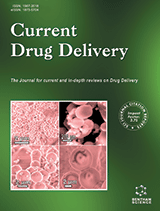Abstract
Background: Glioblastoma multiforme (GBM) continues to devastate patients and outfox investigators and clinicians despite the preponderance of research directed at its biology, pathogenesis and therapeutic advances. GBM routinely outlasts multidisciplinary treatment protocols, almost inevitably recurring in a yet more aggressive and resistant form with distinct genetic differences from the original tumor. Attempts to glean further insight into GBM point increasingly toward a subpopulation of cells with a stem-like phenotype. These cancer stem cells, similar to those now described in a variety of malignancies, are capable of tumorigenesis from a population of susceptible cells.
Conclusions: Glioma stem cells have thus become a prevalent focus in GBM research for their presumed role in development, maintenance and recurrence of tumors. Glioma stem cells infiltrate the white matter surrounding tumors and often evade resection. They are uniquely suited both biochemically and environmentally to resist the best therapy currently available, intrinsically and efficiently resistant to standard chemo- and radiotherapy. These stem cells create an extremely heterogenous tumor that to date has had an answer for every therapeutic question, with continued dismal patient survival. Targeting this population of glioma stem cells may hold the long-awaited key to durable therapeutic efficacy in GBM.Keywords: Chemotherapy, drug targets, glioblastoma multiforme, glioma stem cells, niches, resistance, recurrence.
Current Cancer Drug Targets
Title:Hitting a Moving Target: Glioma Stem Cells Demand New Approaches in Glioblastoma Therapy
Volume: 17 Issue: 3
Author(s): Drew A. Spencer, Brenda M. Auffinger, Jason P. Murphy, Megan E. Muroski, Jian Qiao, Yureve Gorind and Maciej S. Lesniak
Affiliation:
Keywords: Chemotherapy, drug targets, glioblastoma multiforme, glioma stem cells, niches, resistance, recurrence.
Abstract: Background: Glioblastoma multiforme (GBM) continues to devastate patients and outfox investigators and clinicians despite the preponderance of research directed at its biology, pathogenesis and therapeutic advances. GBM routinely outlasts multidisciplinary treatment protocols, almost inevitably recurring in a yet more aggressive and resistant form with distinct genetic differences from the original tumor. Attempts to glean further insight into GBM point increasingly toward a subpopulation of cells with a stem-like phenotype. These cancer stem cells, similar to those now described in a variety of malignancies, are capable of tumorigenesis from a population of susceptible cells.
Conclusions: Glioma stem cells have thus become a prevalent focus in GBM research for their presumed role in development, maintenance and recurrence of tumors. Glioma stem cells infiltrate the white matter surrounding tumors and often evade resection. They are uniquely suited both biochemically and environmentally to resist the best therapy currently available, intrinsically and efficiently resistant to standard chemo- and radiotherapy. These stem cells create an extremely heterogenous tumor that to date has had an answer for every therapeutic question, with continued dismal patient survival. Targeting this population of glioma stem cells may hold the long-awaited key to durable therapeutic efficacy in GBM.Export Options
About this article
Cite this article as:
Spencer A. Drew, Auffinger M. Brenda, Murphy P. Jason, Muroski E. Megan, Qiao Jian, Gorind Yureve and Lesniak S. Maciej, Hitting a Moving Target: Glioma Stem Cells Demand New Approaches in Glioblastoma Therapy, Current Cancer Drug Targets 2017; 17 (3) . https://dx.doi.org/10.2174/1568009616666161215161924
| DOI https://dx.doi.org/10.2174/1568009616666161215161924 |
Print ISSN 1568-0096 |
| Publisher Name Bentham Science Publisher |
Online ISSN 1873-5576 |
Call for Papers in Thematic Issues
Advances in Cancer Biomarkers and Potential Drug Targets: From Diagnosis to Therapy
Cancer biomarkers play a crucial role in the diagnosis, prognosis, and treatment of cancer. They provide valuable information for cancer detection, risk assessment, treatment selection, and monitoring response to therapy. With advancements in molecular biology and high-throughput technologies, there has been an increasing interest in identifying and characterizing cancer biomarkers ...read more
Novel Therapeutic Approaches to Target Drug Resistant Tumors
With the development of disciplines such as chemical biology and molecular biology, the genes or proteins closely related to tumor occurrence and development have gradually become clear. Targeted therapies targeting these genes or proteins provide more effective methods for tumor treatment. Tumor targeted drugs generally only act on specific targets ...read more
ROLE OF IMMUNE AND GENOTOXIC RESPONSE BIOMARKERS IN TUMOR MICROENVIRONMENT IN CANCER DIAGNOSIS AND TREATMENT
Biological biomarkers have been used in medical research as an indicator of a normal or abnormal process inside the body, or of a disease. Nowadays, various researchers are in process to explore and investigate the biological markers for the early assessment of cancer. DNA Damage response (DDR) pathways and immune ...read more
Targeting the battlefield between host and tumor: basic research and clinical practice on reshaping tumor immune microenvironment
Immune system protects host against malignant tumors through effector cells and molecules. Cancer development and its response to therapy are regulated by inflammation, which either promotes or suppresses cancer progression. Chronic inflammation facilitates cancer progression and treatment resistance, whereas induction of acute inflammatory reactions often lead to anti-cancer immune responses. ...read more
 118
118 5
5 1
1
- Author Guidelines
- Graphical Abstracts
- Fabricating and Stating False Information
- Research Misconduct
- Post Publication Discussions and Corrections
- Publishing Ethics and Rectitude
- Increase Visibility of Your Article
- Archiving Policies
- Peer Review Workflow
- Order Your Article Before Print
- Promote Your Article
- Manuscript Transfer Facility
- Editorial Policies
- Allegations from Whistleblowers
Related Articles
-
Epigenetics in Brain Tumors: HDACs Take Center Stage
Current Neuropharmacology Iron Chelators: Development of Novel Compounds with High and Selective Anti-Tumour Activity
Current Drug Delivery Small Interfering RNA for Effective Cancer Therapies
Mini-Reviews in Medicinal Chemistry Role of Natural Phenolic Compounds in Cancer Chemoprevention via Regulation of the Cell Cycle
Current Pharmaceutical Biotechnology Manipulation and Engineering of Metabolic and Biosynthetic Pathway of Plant Polyphenols
Current Pharmaceutical Design Glioblastoma Multiforme Imaging: The Role of Nuclear Medicine
Current Radiopharmaceuticals Cancer Stem Cells Switch on Tumor Neovascularization
Current Molecular Medicine Targeting the Wingless Signaling Pathway with Natural Compounds as Chemopreventive or Chemotherapeutic Agents
Current Pharmaceutical Biotechnology Recognition Sites for Cancer-targeting Drug Delivery Systems
Current Drug Metabolism Chemosensitization of Prostate Carcinoma Cells with a Receptor-directed Smac Conjugate
Medicinal Chemistry Water and Ion Channels: Crucial in the Initiation and Progression of Apoptosis in Central Nervous System?
Current Neuropharmacology Role of TGF- β in the Tumor Stroma
Current Cancer Drug Targets Recent Advances in the Synthesis and Anticancer Activity of Some Molecules Other Than Nitrogen Containing Heterocyclic Moeities
Mini-Reviews in Medicinal Chemistry The Insulin-Like Growth Factor (IGF) Signaling Pathway: Strategies for Successful Therapeutic Tasks in Cancer Treatment
Current Cancer Therapy Reviews Imaging Adoptive Cell Transfer Based Cancer Immunotherapy
Current Pharmaceutical Biotechnology Herpes Simplex Viruses in Antiviral Drug Discovery
Current Pharmaceutical Design Hybrid PET/MRI for In Vivo Imaging of Cancer: Current Clinical Experiences and Recent Advances
Current Medical Imaging Microenvironment and Brain Tumor Stem Cell Maintenance: Impact of the Niche
Anti-Cancer Agents in Medicinal Chemistry Strategies to Overcome or Circumvent P-Glycoprotein Mediated Multidrug Resistance
Current Medicinal Chemistry Nutritional Attributes and Health Application of Seabuckthorn (<i>Hippophae rhamnoides</i> L.) – A Review
Current Nutrition & Food Science



























